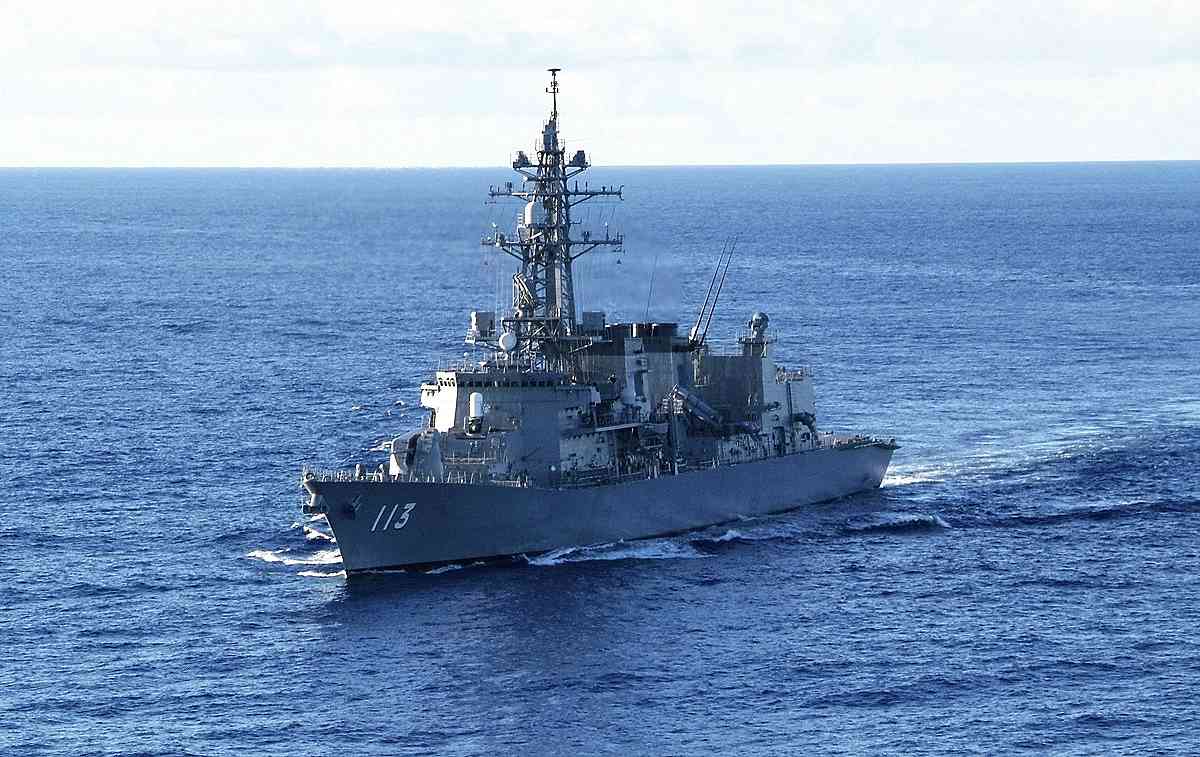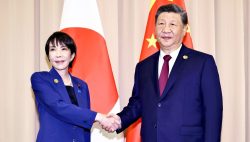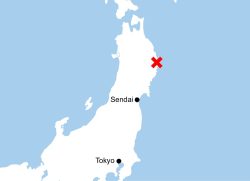MSDF Ship Sazanami Makes A Point In Taiwan Strait; Same Vessel Brought Relief to China After 2008 Quake

The Maritime Self-Defense Force destroyer Sazanami
8:00 JST, October 19, 2024
On Sept. 25, the attention of Japanese government officials was focused on a ship in the Taiwan Strait.
That morning, the Maritime Self-Defense Force destroyer Sazanami began passing through the waterway. It was the first time an MSDF vessel had ever made such a passage in the 70-year history of the SDF. With China aiming to reabsorb Taiwan and increasing its military pressure, the Taiwan Strait, which separates the two sides, is an area of extreme geopolitical sensitivity. The reason for sailing through it was to counter China’s influence in East Asia.
The Japanese government’s concerns about the actions of the Chinese military had intensified since the Chinese side violated Japanese airspace with an intelligence-gathering aircraft on Aug. 26 and sent its aircraft carrier Liaoning through Japan’s contiguous zone on Sept. 18.
Both of these events were unprecedented, and there was a risk that they might escalate further. For that reason, then Prime Minister Fumio Kishida considered sending the Sazanami to the Taiwan Strait as a countermeasure.
The Kishida administration was in a diplomatically advantageous position to make such a move. On Sept. 20, Japan reached an agreement by which China would gradually lift the ban on Japanese seafood that it had imposed in response to the release of treated water from the Fukushima No. 1 nuclear power plant into the ocean. With a conclusion having been reached on at least some pending issues with China, Kishida gave the go-ahead for the dispatch, seeing that if the decision came from him — as he was soon to step down — the Chinese side’s opposition would not drag on for long.
Many MSDF officers had long been frustrated by the moves of the Chinese military around Japan. They had expressed their desire to government officials to pass through the Taiwan Strait as a countermeasure against China, because there are no international legal issues regarding the passage. When their wish was finally granted, they are said to have cheered.
The Sazanami, together with an Australian Navy destroyer and a New Zealand Navy replenishment ship, successfully completed its passage through the strait on the night of the Sept. 25, while being monitored by five Chinese naval vessels.
The Sazanami is a veteran destroyer that took part in the first “U.S. military ship protection” mission, in which the SDF provides protection for U.S. military personnel on training exercises under the security-related legislation of 2017. It also carried out anti-piracy activities off the coast of Somalia in 2009.
In fact, the Sazanami has a history of ties with China. In June 2008, it became the first Japanese SDF vessel to visit China. In Guangdong Province it delivered relief supplies after the Sichuan earthquake, including blankets and canned food, and was visited by around 100 Chinese naval personnel.
In contrast to that time, the current regime of President Xi Jinping has heightened China’s hegemonic tendencies. There are no goodwill gestures between the Japanese and Chinese defense authorities as there were in 2008. Some believe that the recent increase in Chinese military activity is in line with what is said to be Xi’s hoped-for schedule for completing preparations for an invasion of Taiwan by 2027.
The contrast between the Sazanami’s two China-related missions seems to symbolize the fact that Japan-China relations have become significantly more severe.
The Japanese government made various efforts to avoid unnecessarily provoking the Chinese side. It did not disclose the movement of the Sazanami, and when Chief Cabinet Secretary Yoshimasa Hayashi was asked about the ship at a press conference, he took the unusual step of neither confirming nor denying it, saying, “I will refrain from answering about the operations of the Self-Defense Forces.” It is also believed that the MSDF chose the Sazanami largely because it was not equipped with the highly combat-capable Aegis system.
Responsibility for steering Japan’s relations with China has been passed from Kishida to Prime Minister Shigeru Ishiba, who was serving as defense minister at the time of the Sazanami’s visit to China in 2008. Ishiba needs to continue to take a firm stance to show China that Japan would be a formidable opponent.
Political Pulse appears every Saturday.

Shuhei Kuromi
Shuhei Kuromi is a deputy editor in the Political News Department of The Yomiuri Shimbun.
"Editorial & Columns" POPULAR ARTICLE
-

Artificial Intelligence Expands Possibilities for Foreign Language Learners
-

Build Intellectual, Physical Strength, As Well As Communicative Power / Japan Should Move from Beneficiary to Shaper of World Order
-

Global Economy in Turmoil: Prevent Free Trade System from Going Adrift / Risks to Financial Markets Must Be Heeded
-

Japan-China Strain Set to Persist as Beijing Officials Self-Interestedly Bash Tokyo; Takaichi Unlikely to Back Down
-

French and German Ambassadors to Japan Call for Democracies to Unite in Defense against Russian Disinformation
JN ACCESS RANKING
-

As Chinese Tourists Shun Japan, Hotels and Stores Suffer
-

Osaka-Kansai Expo’s Economic Impact Estimated at ¥3.6 Trillion, Takes Actual Visitor Numbers into Account
-

Japan Govt Adopts Measures to Curb Mega Solar Power Plant Projects Amid Environmental Concerns
-

BOJ Gov. Ueda: Highly Likely Mechanism for Rising Wages, Prices Will Be Maintained
-

Economic Security Panels Debate Supply Chains, Rare Earths; Participants Emphasize Importance of Cooperation Among Allies






















